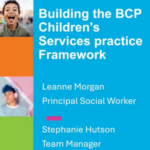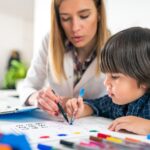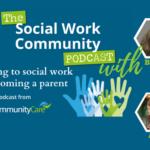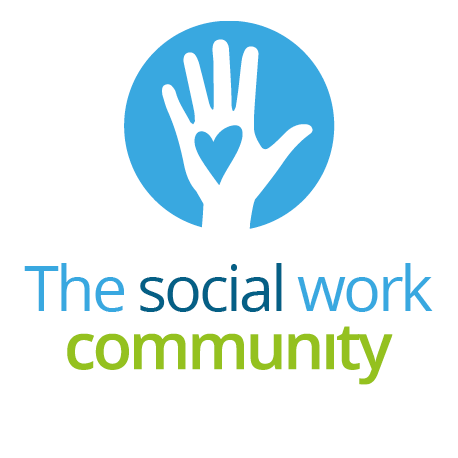

This article presents a few key considerations from Community Care Inform Children’s guide on the specific risks faced by disabled children and how to address potential barriers and challenges to keeping them safe. The guide explores how to use professional curiosity to assess risk and need, and how to identify and address potential abuse and maltreatment. Inform Children subscribers can access the full guide here.
This guide was written by the Council for Disabled Children, an umbrella body for the disabled children’s sector that works to improve outcomes for disabled children and young people.
Safeguarding concerns about disabled children may arise for practitioners working in any type of children’s social work team. This includes front door referrals (of children who may or may not already be known to a local authority due to disability), as well in the course of assessing and providing support services for disabled children and their families. They can also arise when working with looked-after and adopted children.
It is therefore vital for all social workers to understand the specific challenges and issues involved in safeguarding disabled children and young people and those with special educational needs.
Applying professional curiosity
Professional curiosity is key in all safeguarding practice to help challenge assumptions and gain a greater understanding. The City of London and Hackney Safeguarding Children Partnership (CHSCP) provides helpful questions to consider in the context of safeguarding disabled children:
- What is the disability, special need or impairment that affects the child/young person?
- How does the disability or impairment affect the child on a day-to-day basis?
- How does the child communicate? If someone says the child can’t communicate, ask how the child indicates if they want something.
- How does the child show they are happy or unhappy?
- Are there or have there been concerns about parenting or abuse?
- Are there any concerns about the parenting of non-disabled children in the family?
- What support for the child and family is in place? What is working well and what interventions or support have not worked well?
- What resources are available to support the disabled child from within their own family network?
- Have both parents and/or anyone with parental responsibility been engaged in the assessment and/or intervention?
- Has a family group conference been considered?
- Have you reviewed the ‘local offer’ for children with additional needs or consulted with specialist workers/the disabled children’s service to ensure the child is accessing all the services they are entitled to (eg short breaks)?
- Are there differences of opinion about the experiences of the child in the professional network and, if so, what may this be about?
- Where there are multiple hypotheses about what might be happening for a child, does your plan reflect this and work to address all possible scenarios of concern?
- Would you consider the same safeguarding options if the child was not disabled?
Assessing support needs for disabled children in need
Under the Children Act 1989, local authorities are under a general duty to safeguard and promote the welfare of children in need.
Any child with a disability who meets the definition of a ‘disabled child’ under the Children Act 1989 is automatically a child in need. Children whose condition falls outside of this definition may still qualify for section 17 support – see the quick guide to definitions and duties in relation to disabled children.
Local authorities have statutory duties to assess the needs of and provide services to disabled children. Assessments should be carried out in accordance with the statutory guidance, Working Together to Safeguard Children, with social workers taking a strengths-based, child-centred approach to inform decision making about support offered to the family in the child’s best interests (Department for Education, 2023).
Key considerations:
- A good assessment takes a holistic, child-centred approach and is able to explore problems, beliefs, explanations, emotions, attachments and contextual factors within a family dynamic and to develop hypotheses (Dallos and Vetere, 2003).
- For disabled children and their families, practitioners can benefit from having training and experience to develop the appropriate knowledge of conditions including autism, learning disabilities, and mental health needs (Clements and Aiello, 2021).
- Practitioners need to ensure they are hearing the child, including that they are seen and spoken to alone when there are child protection concerns, with parents not used as interpreters (NSPCC, 2016).
- A co-production approach can help increase trust between parents and professionals when discussing sensitive or difficult topics if safeguarding concerns emerge.
Recognising indicators of maltreatment
The DfE practice guidance Safeguarding Disabled Children (2009) includes a list of possible indicators of abuse or neglect:
- a bruise in a site that might not be of concern on a child who can walk, such as the shin, might be of concern on a non-mobile child;
- not getting enough help with feeding, leading to malnourishment;
- poor toileting arrangements;
- lack of stimulation;
- unjustified and/or excessive use of restraint;
- rough handling or extreme behaviour modification (eg deprivation of liquid, medication, food or clothing);
- unwillingness to try to learn a child’s means of communication;
- ill-fitting equipment (eg callipers, sleep boards, inappropriate splinting);
- misappropriation of a child’s finances;
- invasive procedures which are unnecessary or are carried out against the child’s will.
Responding to disclosures of abuse
When a child or young person does seek help, practitioners can support the process by taking time to prepare for difficult conversations, including by considering how to use activities to explore challenging topics and how technology can enable a child or young person to share their views.
Remember that when working with any child, the concept of ‘disclosure’ can be unhelpful. It suggests a one-off communication to make something known. This is often not how children communicate things we should be concerned about and does not recognise the responsibility of professionals to notice and observe words, signs, and behaviours, and respond in ways that allow more information to be shared.
This is true for all children, but particularly children with communication needs or who are non-verbal.
Practice point
All children can experience barriers to disclosing abuse and maltreatment, such as a fear that they won’t be believed or of the consequences of sharing what is happening.
For disabled children, there may be additional barriers including:
- assumptions made about their means of communication, for example, disclosures may not be recognised as valid or are seen as open to interpretation;
- augmentative communication systems not containing the words necessary to describe an experience of abuse or neglect;
- interpreters/facilitators familiar with the child’s method of communication not being available.
If you have a Community Care Inform Children licence, log on to access the full guide, and learn more about safeguarding disabled children.
What to read next
References
Clements, L and Aiello, A L (2022)
Institutionalising parent carer blame
City of London & Hackney Safeguarding Children Partnership (CHSCP) (2024)
Safeguarding disabled children practice guidance
Department for Education (2023)
Working Together to Safeguard Children 2023
Department for Education (2009)
Safeguarding disabled children: practice guidance
Dallos, R and Vetere, A (2003)
Working Systemically with Families: Formulation, Intervention and Evaluation.
NSPCC (2016)
Deaf and disabled children: learning from case reviews





 Bournemouth, Christchurch and Poole
Bournemouth, Christchurch and Poole  Hampshire County Council
Hampshire County Council  Oxfordshire County Council
Oxfordshire County Council  South Gloucestershire Council
South Gloucestershire Council  Wokingham Borough Council
Wokingham Borough Council  Webinar: building a practice framework with the influence of practitioner voice
Webinar: building a practice framework with the influence of practitioner voice  ‘They don’t have to retell their story’: building long-lasting relationships with children and young people
‘They don’t have to retell their story’: building long-lasting relationships with children and young people  Podcast: returning to social work after becoming a first-time parent
Podcast: returning to social work after becoming a first-time parent  How managers are inspiring social workers to progress in their careers
How managers are inspiring social workers to progress in their careers  Workforce Insights – showcasing a selection of the sector’s top recruiters
Workforce Insights – showcasing a selection of the sector’s top recruiters 

 Facebook
Facebook X
X LinkedIn
LinkedIn Instagram
Instagram
Comments are closed.